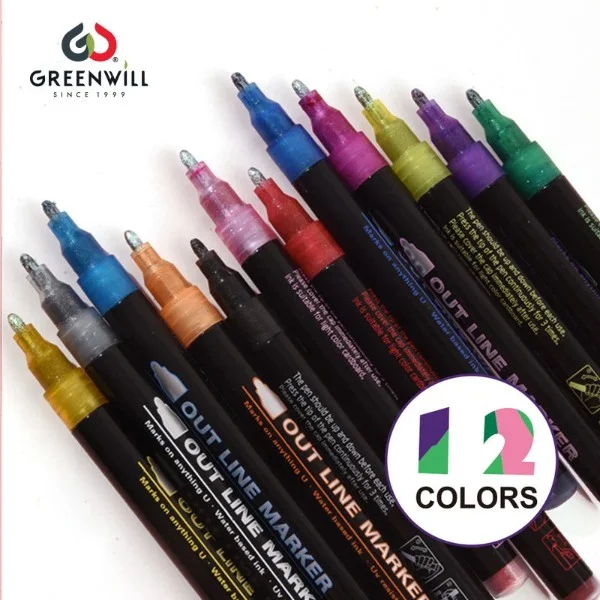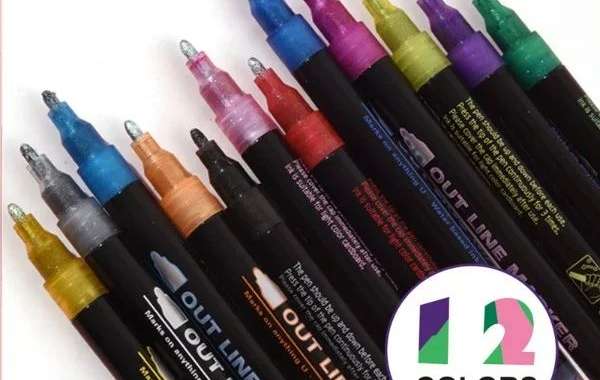The invention of the pen made the existence of our civilization much easier. First, we learned how to speak, and then we tried to write down what was said. It started with pictures, then perfected them until we came to create alphabets. Our ancestors wrote with crude tools, which became more and more refined over time. Through writing, we could not create, share knowledge, and learn. When information became too much, and it became difficult for people to remember everything, writing became necessary.
The first examples of writing date back as far as the 6th millennium B.C. The first inscriptions were carved from wood and stone with stone and metal objects. Later humanity began to use peculiar styluses to write on wax tablets, brushes, chalk, and pen. Pens, of course, not as we know them now, are very ancient writing utensils. They have stood the test of time, and even in the age of high technology, when we exchange information and emotions through electronic gadgets, we continue to use them.
The first pen that wrote with ink:
Pens that used ink first appeared in ancient Egypt around 3000 B.C. Of course, these were not yet pens in their usual form. Ancient Egyptian scribes used so-called reed pens to write on papyrus. As you already know, the first instruments were made of the feathers of large birds, and they appeared in the 7th century, though reed pens remained popular until the Middle Ages.
Modern metal pens appeared in the 18th century, although, for example, a copper pen tip was found in the ruins of Pompeii. The first pens with metal nibs were mass-produced in 1822 by John Mitchell of Birmingham. The quality of steel nibs improved over time, and the dipping pen with metal nibs became a popular writing instrument. The method was quite simple: the pen was dipped in ink, which remained on the tip thanks to capillary action. But there were also pens, which had unique reservoirs and did not need to be dipped often.
They first appeared in the 10th century but didn’t become popular until the 19th century, when fountain pens were invented in France. And here, everyone who dealt with writing felt it necessary to contribute to the development of writing utensils. John J. Grimm, for example, patented the ballpoint pen on October 30, 1888. Eduard Penkala invented his first fountain pen with solid ink in 1907. Laszlo Biro invented his ballpoint pen in 1938. Yukio Hori of the Tokyo Stationery Company created a variant of the pen with a reservoir-ink pen, and in the 1960s, the forerunner of today’s markers was created.
Creation of metal nib. The end of the goose-quill era:
The invention of the steel nib marked the middle of the 18th century, but it was not very popular and widely used, as the pen had no slots, and ink spatters were spread all around. It was not until the end of the century, in 1792, that D. Perry made a longitudinal slot in the tip, which helped to improve the quality and convenience of writing. Though in 1803, a patent for the invention of a pen made of metal was issued, it gained its success only years later, in 1822.
At this time, brothers Mitchell in the English city Birmingham started mass production of pens, which already used metal nibs. A few years later, the first machine, which allowed mass production of steel pens by stamping method, was Mazon – its inventor in 1826. The technology of manufacture was constantly improved, and by 1850 the Birmingham workshops produced almost half of the world’s quantity of pens and pens from metal. So by the end of the 19th century goose pen was practically abandoned in its active use, and a pen replaced it with a steel nib.

Who invented the fountain pen?
Pen automatic pens created by Romanian inventor Petrakov Poenara are considered the first examples. He received a patent for his “portable ink pen” in 1827. These pens were quite revolutionary. The end result was something more visually appealing than a conventional pen. Despite their undoubted value, there were many flaws in Poenard’s design. For starters: the cell had no system to regulate the flow of the ink, so it spread all over the sheet of paper. Even worse, ink in the 19th century had the property of curdling until it reached the tip of the pen.
The design by Poenara was not perfect, and people kept looking for a pen that would not leak or need constant refills. It wasn’t until 1884 (almost 60 years after Poenard’s invention) that Lewis Waterman, an insurance agent from New York, perfected the fountain pen. Some mistakenly believe that L. Waterman invented the first fountain pen, but he only perfected a sample of a long-invented cell. As the story goes, he lent a client a pen to sign a contract, and the ink leaked onto the document.
Disappointed, having lost a large amount of money from the deal-breaker after this situation, Waterman decided to take matters into his own hands and permanently change his first pen. His updated design used an ebonite rubber chamber on the outside and a recessed ink supply on the inside. The ink flowed smoothly, following the simple laws of gravity without flooding the paper. By the 20th century, Waterman’s design had undergone even more changes, such as the addition of an interchangeable cartridge. An innovative invention, like the pen, was made by hand. Such handmade work was costly, so it quickly became a luxury item, and the best examples were available only to the elite class.
George Parker made a significant contribution to the further perfection of the fountain pen. In 1889 he patented his first world-famous invention. In 1892 Parker Pen Company released pens that had a feed curved to the side of the cylinder, which prevented ink from spilling onto the paper and drying out after the pen was in the horizontal position. 1911 saw the introduction of the Lucky Curve with an improved ink supply system.
1912 – Safety Cap (“safety cap”) was developed, a new version of the safety cap that further minimized Parker fountain pens’ chance to leak.
The ballpoint pen enters the arena:
The ballpoint pen was a turning point in developing this writing device, bringing us to modernity. It was a sturdier, more comfortable writing tool that could write on wood, cardboard, and even underwater surfaces. At the time (19th century), it was a true discovery.
The ballpoint model is the most popular and widely used pen, which is attributed to the American inventor John H. Lowood. He received a patent for his invention, but the design never produced a good ink flow.
It wasn’t until a decade later, in the 1930s, that another attempt at a ballpoint pen was made by Laszlo Biro, a Hungarian journalist living in Argentina during World War II. As a journalist, he was all too familiar with the annoyance of having ink stain the paper. He came up with the idea of using fast-drying ink instead of regular ink and introducing a small rotating metal ball. It prevented the ink from drying out inside the rod and distributed the ink evenly.
In 1943 Lazlo and his brother Georg, a chemist received a new patent. Together they experimented and tried to make a new type of pen. This time they combined a new kind of viscous ink and a mechanism with a ball tip with a shrunken ball, which kept the ink from drying out inside the pen and controlled the flow of the ink. The ball was placed in a socket at the pen’s tip, but it could rotate freely, collecting ink from the reservoir and leaving it as a line on the surface where it was dragged. This innovation was first presented at the Budapest International Fair in 1931 and caused a sensation. But it wasn’t until 1938 that they patented the invention. They went on to create their first commercial models. Biro pens are now a name that can be considered synonymous with the ballpoint pen.
Modern offspring of the pen:
Other developments include the modern felt-tip pen, created by Yukio Hori. These pens are used in creative environments and are known for their ability to write on a variety of surfaces–they were even later transformed into markers and suitable for surfaces such as C.D.s, for example.
The rollerball was not invented until the 1980s by the Japanese company Ohto. The rollerball pen was a more elegant and advanced technology for the ballpoint pen (even smaller ball and correspondingly less viscous ink). The modern rollerball pen has the same design as the ballpoint model but instead uses water-based or gel-based liquid ink, which provides a writing style very similar to a fountain pen.
How valuable pens are was demonstrated by the famous journalist Harry Weiss. On a trip to his childhood home, he came across a shoebox full of fountain pens his father had used during President Eisenhower’s reign. A silver Esterbrook with interchangeable nibs, two Sheaffers’ cargo blue pens, and a Lucky Curve from Parker Pen Company. Gary Weiss found that the decision to repair these instruments was quite an expensive undertaking, costing by then over $300 for replacement parts alone. However, such a high price was worth the sentimental value these items represented. Not only did he keep these pens for years afterward, but he was amazed that they still worked! His story shows the importance of professional quality.
Throughout history, office supplies have undergone many modifications to serve us supremely well. Today we have different implements that we use for writing, drawing, and drafting, and they seem much better. Even now, some essay writers from the best essay writing service like to write with a pen. But we continue to use the classic pen to create a masterpiece. Even in the age of technology, the cell remains an essential tool in history. The act of writing has formed a unique part of our cultural heritage. Pens continue to be used and admired centuries ago, although these reusable ink pens are increasingly found only by collectors. The wide range of models continues to be used in many aspects of life: from the business sphere to the world of creativity and creation.







